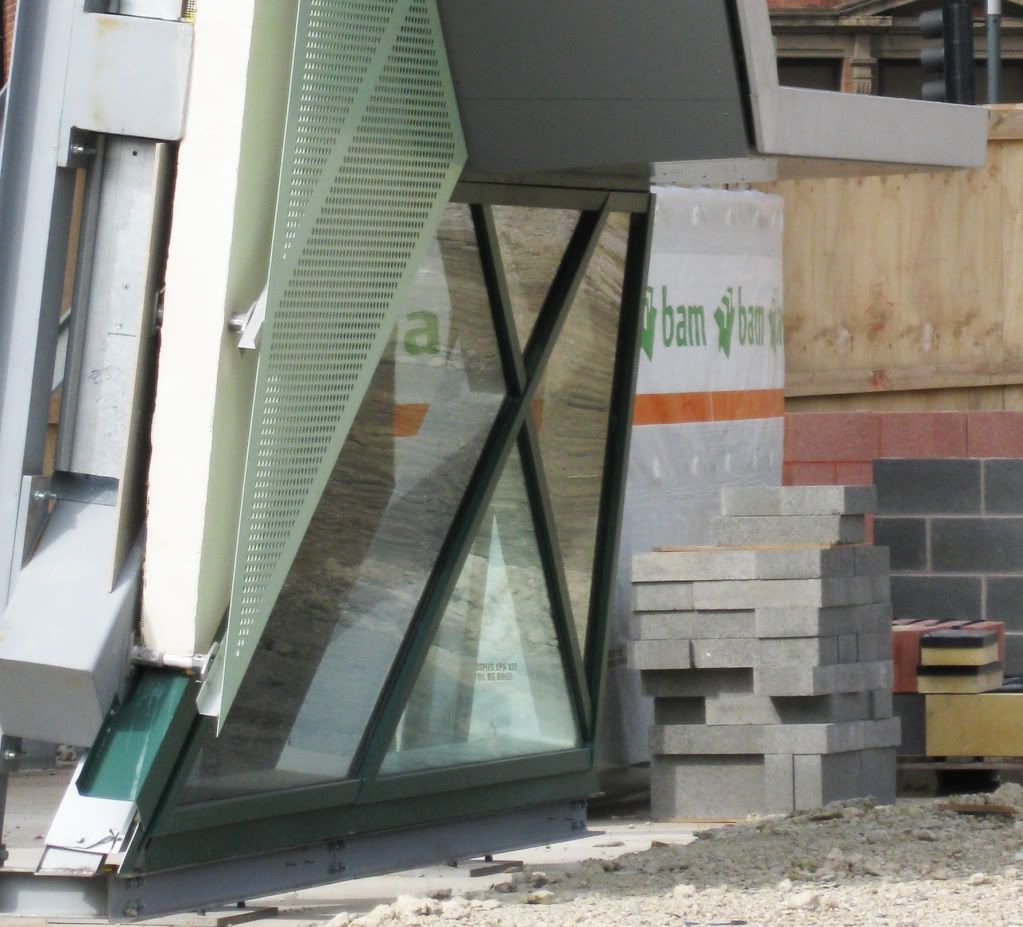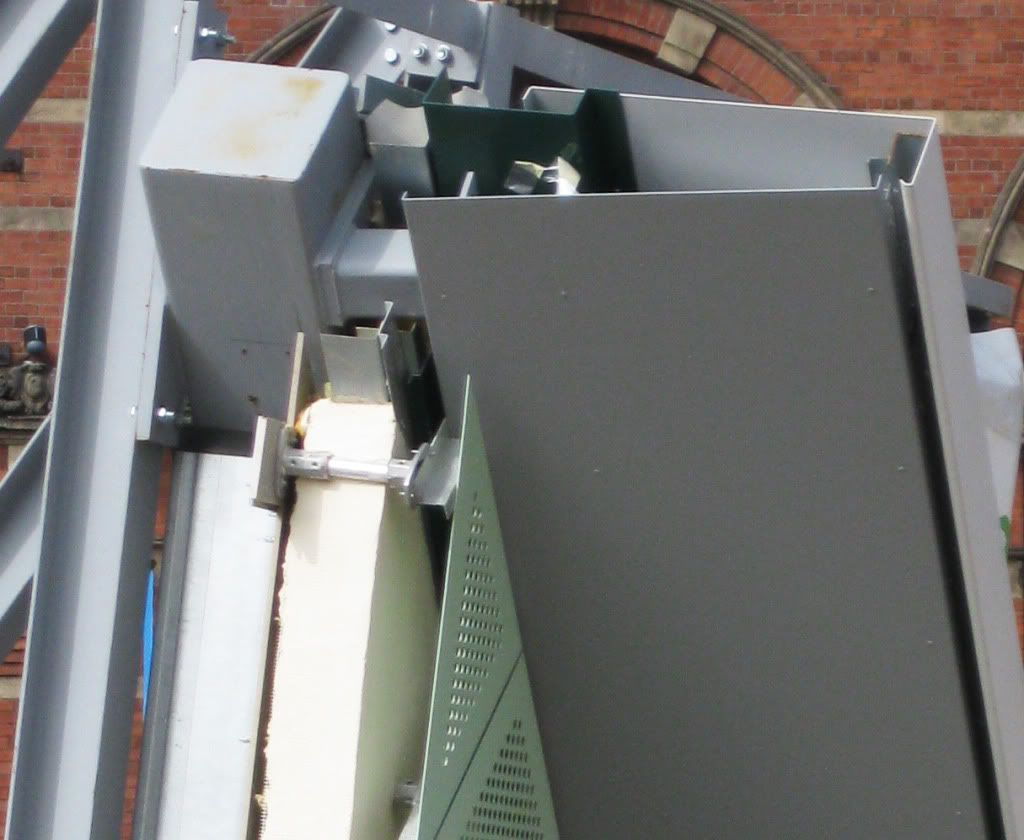The Royal Armouries was apparently not planned for Leeds, but the large collection was opened due to lack of space in wherever Plan A was. Plan B, Leeds, is fairly uninteresting from the outside, but walking through the ever-desolate Clarence Dock, the entrance (below) looked quite appealing. The large glass wall and the huge 'FREE ENTRY' signs combine to attract quite a large number of people to the building.
The collections are excellent, but I shall write about the architecture instead, as the internal layout does well to display them. The main design feature I noticed was that the entrance is at the opposite end of the building to the circulation. This means that visitors walk under all these bridges in the atrium and are offered glimpses of the displays before they arrive at them.
The circulation is important to the building. The winding staircases wrap around a collection of spears, swords and the like, so whilst the circulation seems disconnected from the main body of the building, the visitors still have a lot to look at as they ascend into the upper floors. The glass lifts also enforce the views of the exhibits - there is nowhere in the building I could find (other than WCs) that felt disconnected from the collections, i.e. it was always apparent I was in a museum.

The monotonous grey engineering brick covering more or less the entire building didn't really promote the building on the grey, overcast day I visited... in fact it looked pretty awful. The picture from the AJ, above, on a clear day even makes the building look ugly. The museum is vast - like any good museum there is something new to discover in both the collection and the building each time I visit, but I can't help feeling that the exterior doesn't promote the collection, neither does it make Clarence Dock look any more appealing.
































